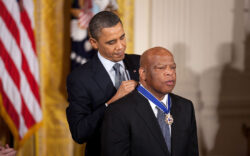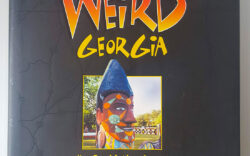While Earth reels with worldwide pandemic, environmental ruin, economic downturns, racial strife, wars, riots and an epidemic of authoritarianism spreading around the globe, the heavens over our heads still inspire curiosity in humankind. In these times of doubt and cynicism, science can instill wonder in the hearts and minds of people on this small planet.
While fear and uncertainty stalk this world, some much-needed good news has come from far above Earth in the past few weeks. Earlier this month, two NASA astronauts returned safely from a two-month stay aboard the International Space Station. Their launch was the first manned flight from Cape Canaveral since the space shuttles were retired in 2011. Since then, America’s space agency has had to pay high prices to send its astronauts to the station aboard Russian rockets.
Even as U.S. manned spaceflight is getting back on track, faraway Mars beckons humans who have long been fascinated with the Red Planet, the subject of countless science fiction yarns and the target of robot spacecraft that have visited Mars since the 1960s. Earlier this summer, three unmanned spacecraft from the U.S., China and the United Arab Emirates were launched to explore Mars and will arrive early next year.
Sixty years ago, interest in technology and respect for science were high among citizens young and old. In August 1960, people around the world turned their eyes to the skies to view the Echo satellite, an orbiting Mylar balloon 100 feet in diameter that circled Earth every two hours. The aptly named Echo was used to bounce communications messages long distances to receiving stations on Earth—a precursor to the relay satellites now beaming TV and radio signals around today’s world. Though humans had been observing satellites since Russia’s Sputnik ushered in the Space Age in 1957, Echo’s large size and shiny surface made it easy to see as it arced overhead like a bright, fast-moving star. I can still remember seeing Echo as it sped across the starry skies of Georgia on hot August nights. Newspapers printed schedules of when Echo would be visible, and the National Geographic Society said that the orbiting balloon probably had been seen by more people than any other single object in human history during its months of circling our world. The satellite brought wonder to the eyes of the millions who saw it, and it brought the use of the then-new material Mylar into the world’s popular and commercial realm.
During the same week that Echo was launched, the Air Force recovered a capsule ejected from the unmanned Discoverer satellite orbiting high above Earth. It was the first object to successfully return from orbit, and was a needed boost for the American space program that had so frequently been upstaged by Russian rocket science. Plucked from the waters of the Pacific Ocean, the Discoverer capsule was shown to President Eisenhower at the White House soon after its historic journey. It now resides in the Smithsonian’s National Air and Space Museum in Washington.
“The Space Race Soars With a Vengeance” blared a Life magazine headline in 1960 as both the Soviet Union and the U.S. rushed to launch the first manned satellites, a first that the Soviets would achieve in 1961. Here in America, the X-15 rocketplanes were breaking speed and altitude records nearly every week in the skies over the California desert. At Cape Canaveral, the seven astronauts of the Mercury project would have to wait until 1961 to begin their first forays into space.
I was on the scene to view the launch of the first space shuttle in 1981. Today, though, we live in times of surly cynicism instead of healthy skepticism. Millions in a nation that once respected science now scoff at scientists. Poet William Wordsworth could have been describing today’s world when he lamented that “little we see in Nature that is ours.” During these days of fear and uncertainty around the world, science and space can provide a boost for the human heart and an impetus for the imaginations of all Earth’s children.
Many space travelers have remarked on the fragility of our world as seen from the lofty perch of space. Photos of the whole Earth taken by astronauts on the moon were inspirations for the environmental movement that seeks to protect our fragile home planet. Astronaut Karen Nyberg spoke the truth after her space missions in orbit when she said, “If I could get every earthling to do one circle of the Earth, I think that things would run a little differently.”
Like what you just read? Support Flagpole by making a donation today. Every dollar you give helps fund our ongoing mission to provide Athens with quality, independent journalism.










